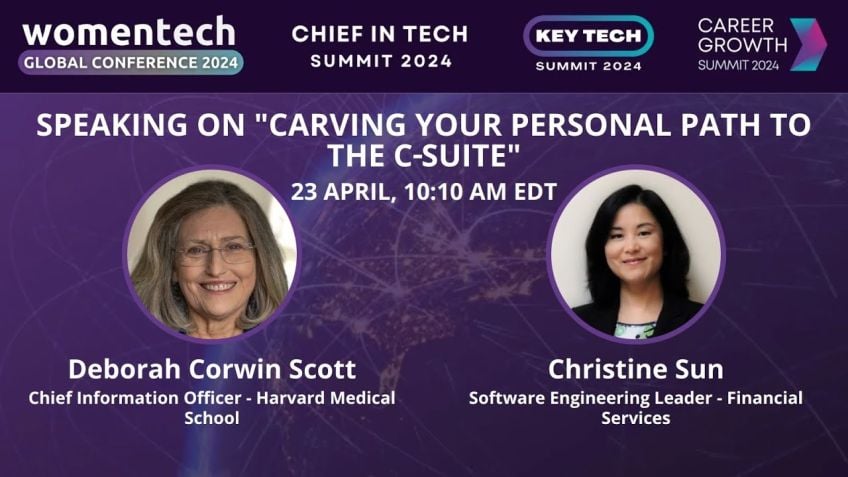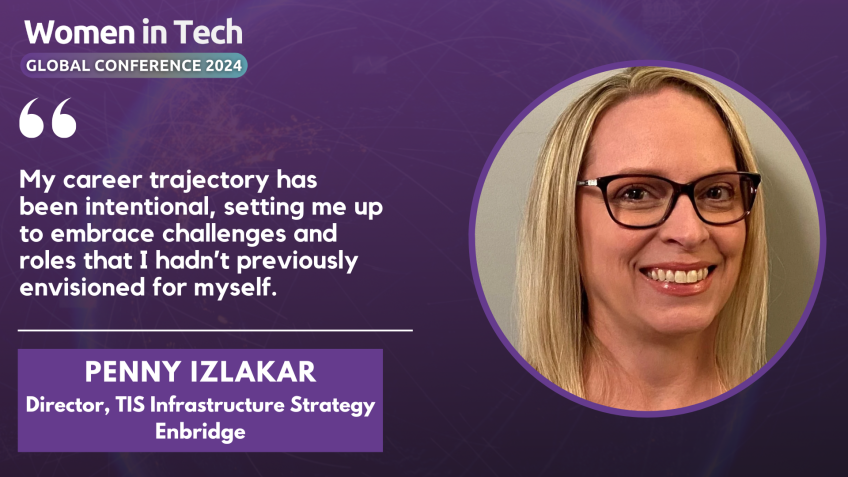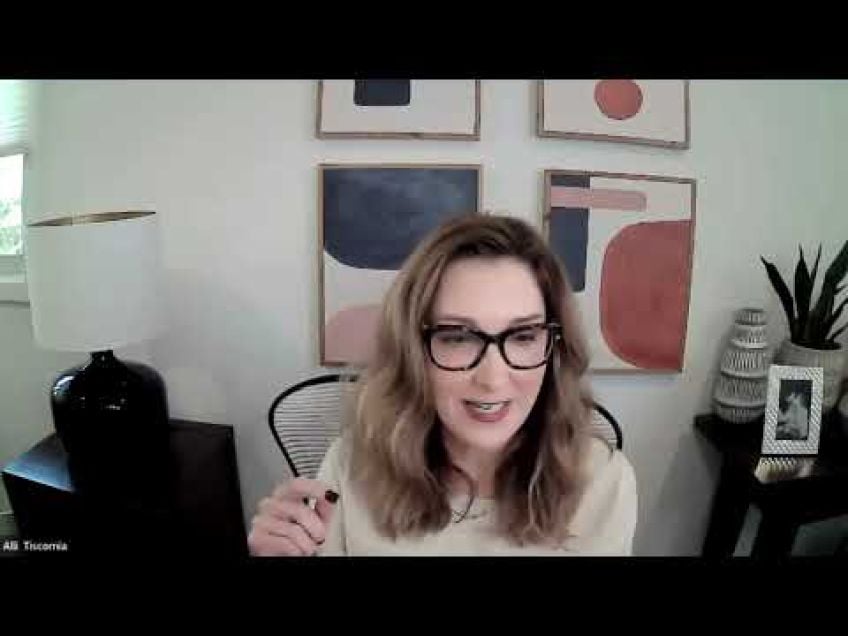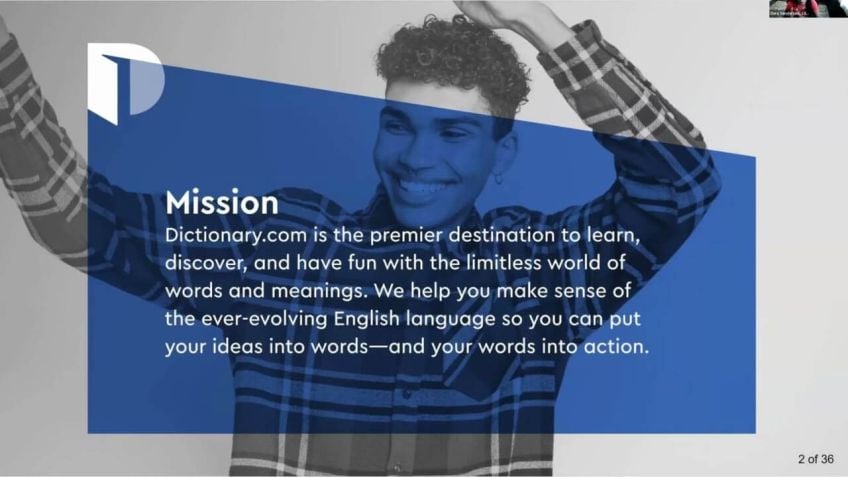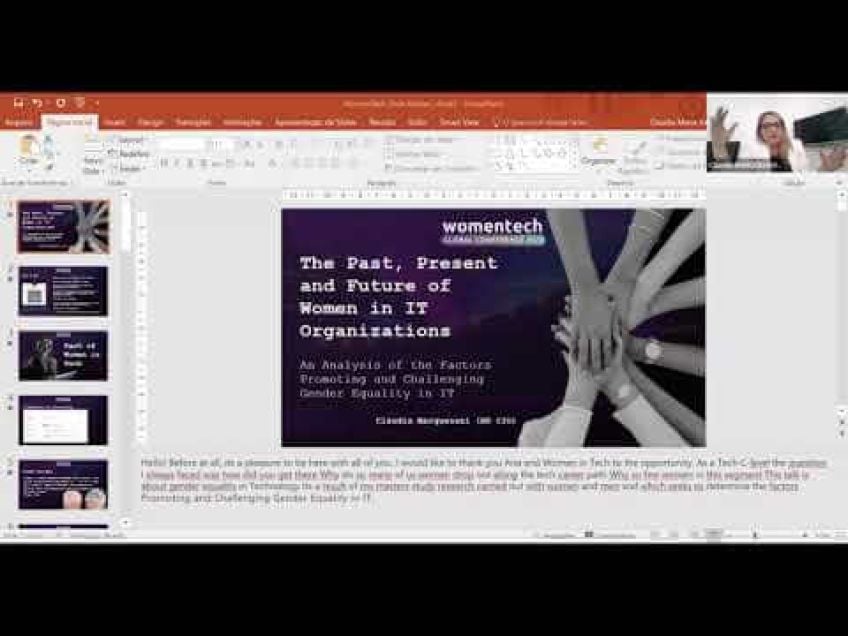How to turn ideas into reality by Magali De Jaegher
Turning Ideas into Reality: Your Ultimate Guide
Acting upon new, exciting ideas can be intimidating and hard to start, but it's incredibly rewarding when they succeed. Here, we offer you an actionable guide to help you make your ideas a reality, boosted by the inspiring story of Malin, a young Belgian professional who turned her dreams into reality.
About Malin
Malin, a native Belgian and proud dog mom, is currently a resident of Barcelona. Her intriguing journey which saw her shift from studying business engineering in Belgium to occupying the role of Director of the Tech Portfolio at VP, provides plentiful life lessons and insights for anyone aspiring to spring their ideas to life.
The Story That Sparked It All
Years into her adult life, Malin found herself lacking fulfillment and decided to act upon a lifelong dream: living abroad. After a few life coaching sessions, she made the conscious decision to prioritize this specific pursuit to bring herself happiness. Though the process of organizing everything was complicated, her commitment and step-by-step approach turned her dream into reality.
Malin's story is a testament to the power of taking action. It highlights how you, too, can act on your thoughts, whether professional or personal, to achieve the sense of fulfilment that everyone invariably seeks.
Putting Dreams into Practice
From dreaming about a different career path to thinking about launching an app on the market, the following practical steps that Malin proposes to turn ideas into reality can be applied to any scenario:
- Prioritize: Identify your most important idea by evaluating options and deciding which one holds the most value for you. Once you've picked a priority, stick to it.
- Divide and conquer: Break down your big idea into smaller, manageable tasks. These clearly defined steps make the ultimate goal seem less intimidating and more achievable.
- Focus: Stay committed to your chosen goal and avoid distractions. Remember why you consider this venture your priority.
- Communicate and align: Especially in a professional setting, ensure everyone involved is well-aligned with your vision. Frequent communication and discussion about progress, decisions, and changes can foster unity and shared commitment.
- Drive: This is the most crucial aspect to success. Be ready to push beyond boundaries and difficulties, leveraging your strong desire to see your idea come to life.
Leveraging Strategies for Success
Whenever you are immersed in chasing your goals and aspirations, remember to step back and breathe - clear your mind and regain sight of why you set this goal. Do you need to reassess your approach or align your team's visions? Your answers to these questions could be the light at the end of the tunnel whenever you face hurdles.
At the end of the day, remember that you don't have to be perfect, but you do have to be 100% committed to make your dreams happen. This drive and your resilience will help you turn your ideas into reality.
Feel free to connect with Malin on LinkedIn and dive deeper into her journey and the strategies she followed to implement her ideas successfully. Remember, there's no bigger joy than seeing your ideas flourish and reap success, so start prioritizing, dividing, focusing, communicating, and driving towards your goals today!
Video Transcription
Hello, everyone. Um My name is Malin. Um I'll start with a very quick presentation of myself. Um So, you know, who is uh speaking to you? Um So I'm 33. I'm Belgian. I come from Brussels currently lives in Barcelona. I studied business engineering uh in Belgium.And I have been a consultant for the first period of my uh career working a lot on transformation of business and techni technological projects. Um And now I work for VP as director of the tech portfolio. Uh means uh the initiatives uh that we need to deliver uh for the company uh success in terms of strategy that involves tech. Uh I coordinate them and I make sure that transversely the company is that um then on the side of work because I think it's uh always a very important aspect to have the two. I'm a dog mom. Uh I um love outdoor sports. Uh You will very often find me hiking or uh kite surfing as I live in Barcelona near the water. Now, uh This is something I love to do. OK. So that's a little bit about me and I wanted to start to start this presentation with maybe a little story uh to put some context around this presentation.
Um So since the moment I started working, uh I always had that craving to go live a brew to live an adventure. And I stated to start working directly or go for a few years, uh you know, traveling the world, but I had a nice offer, a nice contract and I decided to go for it and step by step, years by years, uh the stability of the contracts of the house of the apartment that you live in, uh of everything being set up, uh kind of pulled me to stay into that zone and not take the risk, take the step to actually act on that big dream that I had to live abroad.
Um, years passed by. And at some point, I decided to leave the consulting company, I was in to work for a start up. And after a few months, the start up went bankrupt. And then I was kind of forced to take a new, uh trajectory in life. I was already in the risk zone, uh that I had kind of lost my job and I could actually choose, uh what I wanted to do next. And I want to see a coach, uh to figure out what was the most important for me? What was it? Was it the career, was it the desire to follow a dream or what should I be focusing? On. Um after a few sessions with that coach, I figured out that my top one priority, the only thing that would really make me happy at that moment was uh to act on that dream that I had always had to live abroad. Ok. From that moment on, I started setting up everything with that mindset and that focus uh to go abroad to only accept job offers or interviews which were with position positions abroad um to organize everything that was so complicated to me uh solve one problem at a time. Uh and uh get that done for my job abroad left at the time for Copenhagen. And why am I telling you that?
Because at the end of the day, um I had that dream, took me a long time to act on it and I never felt a big fulfillment in the first years of my life uh waiting for something and then I acted on it. Uh And it wasn't as hard as I thought it would be. It was actually quite achievable and I achieved it. And at the end of the day, the life that I'm driving now uh and the sense of fulfillment and um achievement empowerment that I felt from following the dream that I had and making it happen um has been for me, a life changer and I wanted to share that with you because I think that everybody is able to act on what they have in their mind being a professional or personal dream or idea or strategy and the fulfillment and the empowerment that you get from it, from making it happen is so important that I think everybody should and deserves to feel that.
And so I wanted to share a bit about the structure and the practices that I feel I use at work and in my personal life to make things happen. So maybe some of you can um experience some of that fulfillment uh that you might not have uh at the moment. So, um I'm just checking in the chat if. Ok. Uh Good. Hey, everyone, I'm just checking a quick who I am from Germany Poland in India. India. Hi, everyone. Um, so from an idea to reality, how do we concretely um change things around and realize uh our ideas. Ok. So many people and you might experience that at work around you, um speak about strategies and ideas they have and thoughts and, you know, dream a better day and a better world. Um And it's great because it's actually the first step to making anything happen. Um But at the end of the day, if you don't do anything about it, it stays a dream, a thought, an idea. Uh and it will never come to life. Ok. So it's important to have that first step to have that brainstorming. Um But then it's very important to have a structure to make those things happen and that's what I want to go through in this uh in this presentation. How can you concrete make things happen?
And you can, uh I think that I will take an example out of my real professional life so I can guide you through the steps. And I invite you to think about an idea of yours and take a paper and uh write a little bit the process also for you. How does that apply to you, to your idea, to your dream? And it can be as much as you've been thinking about maybe a new career choice, uh like becoming a UX designer, becoming a developer or, um you have an idea for an app that you would maybe want to launch on the market. Um It can be very personal, like you want to start a new hobby, you're thinking about moving abroad. Um So anything really, uh that is in your mind, which is just a thought, let's go together through the process and see how we could potentially make it happen. Ok, because that's where you will really unlock, uh the fulfillment and the value both for you. And if it's a professional project also for the company you work for. In my case, I'll take the example of the convergence. So for the last three years, I've been working at VP, which is an ecommerce uh retailer. Uh So we, what we do is that we have a website on which we sell uh stock uh of uh brands, for example, such as Nike Adidas.
Um we have flash sales or sales which last around five days and we put that stock, that limited stock online with a discount. Ok. And we offer such a kind of VP experience to our customers that they can find the brands that they really like at a discounted price. Ok. We work for the brands also and we help them uh get rid of some of their stocks. So with that in mind, we have our company in France and we have an office in Brus in the North, in Brussels and one in the South uh which is called Prival. Um All those companies together uh until three years ago, were functioning on different platforms and they had different uh sometimes well vision processes and uh uh ways of working and platforms and systems. And we decided that the top priority of the company was uh to merge and converge all of those acquisitions into one and make sure that everybody was working hand in hand. OK. I was given three years to ensure that we have the convergence of those three regions together. What do we have in a convergence project?
We have an alignment of processes, organizations, we have to make sure that we analyze the gap between the different regions that we implement the features that are missing and that we organize all the change management for the trainings and the communication of such a big change because we have process change, organizational change ways of working.
We need to make sure that the platform is robust that it can handle the scalability, all the new volumes that will come on it, the new members, the new sales, uh the new brands that we can include like payment methods from different countries that we didn't have in that one unique platform.
For example, uh you need to organize like a transformation project Hypercare. Make sure you follow up on the monitoring. Well, many many many elements. And at the beginning, you can imagine my face when I receive such a project, it's a bit scary. You know, like I'm alone in front of all the things. How do I get that even started? That was a little bit my thought and I think that's the thought we have every time we want to implement something uh a project or an idea of value to us. So my first advice will be OK, always take a step back, breathe and be sure that whatever you want to make happen, you can as long as you have the discipline to do it in the right way. So we relax, take the sheet of paper and we start working on the guidelines. The first step of everything is prioritization. It's extremely important that you challenge one idea versus all the others and that you actively choose that this one that you will be working on is the top priority for you. So what I would recommend to do is that you take your ID and you take the other ideas that you have in pale if you have more than one and you ask yourself important questions such as this idea, this project, this strategy, which problem am I trying to solve?
Which value am I trying to bring? So for example, with the convergence, I'm trying to bring the value of a unique platform. So instead of investing on three platforms, the value is that everybody invests on one and there are only 11 business, one way of working. I address the value of the simplicity and efficiency. For example, um other questions such as uh who are the stakeholders that needs to be involved? Who do I need to make this project happen or this idea happen? Who needs to help me um other things? Success factor. When do I consider that I have achieved my goal that it's successful? Um So all these kind of things you put them for your prior I DS, you list them. OK. Value pay stakeholders to be involved. Success factor. When do I consider it done? Um what do I get out of it? And you do it for each of the potential ideas on which you could be investing tomorrow and you compare them and you choose and when you choose a priority, you fix, you stay on it. OK, so you say this is my priority. This is what I will be working on. And you can say, OK, the second, the second priority that I will continue afterwards is this one. So that's the first thing defined very well, the scope and the importance of each idea and choose the one that you want to be focusing on. For me, for example, when I decided to go abroad, um that was my key focus. My only focus.
No, everything was organized around that. And then only I focused on my next priorities. For example, one of them was to become a yoga teacher and I did the certification after I moved abroad. But I did things in an order. Not all at the same time, the second one is divide and conquer. OK? It seems very scary when you look at it like one big achievement, one huge goal. But the thing is that to get somewhere usually also in your daily life. If you need to clean your apartment, you will start with one of the room of the apartment and one place and then you will continue to the next one until the whole apartment is clean. Well, it's exactly the same, whatever the size of the idea and strategy, you have one step at a time, I divide my ID into little pieces that I can achieve one by one after each other. In the context of the convergence, I had a huge convergence of three regions. I decided that I would focus first year on the South, on the south front. Then on the south, back then on the North region four. OK. And in each of them, we split this into milestones. Every quarter had a milestone and then we had steps. Every month was a step. And for each I had achievements, expected success factors.
Each month I knew I had reached my goal because I had defined the scope of what I wanted to achieve for that month. At each quarter, I could check my success indicators and says, if I was going in the right direction or not, at the end of January 2021 I knew if my convergence was going right. If I had actually finished the South front, uh part of my project, you know, and then you can see how you're doing and you can adapt if needed. But the most important is make steps out of the big idea. OK? Take the time to plan for that to divide it. Third element is focus. Um So you chose a road, you chose a priority actively willingly compared options and choose to go in one direction. That was the most important idea for you. And you remember why? Because you made the work. So you remember the value, the pain, what you were trying to work on. Ok. So as long as all things equal, this is still your priority. Stay on the road, avoid distractions and deliver it. One step. At a time, you have made steps, you go through your steps. OK? As long as this is still the priority, we are in a world that change that evolves. We also very fun all of us of A G.
So at any time, you can also choose to say things have changed and what was once priority is not more a priority? That's OK. Drop it. You know, at any time, you can choose to change your focus. But once you focus on something I highly recommend to avoid having multiple things. At the same time, you choose one and you go for it because you lose a lot of time what we call context switching, going from one idea to another one. It's a lot of de focusing is a lot of loss of energy and time. And normally if possible, you in way better, your ability to deliver is way better if you focus on one clear line. So as much as you can try to do that and if you have a lot of exciting ideas, it's OK. You will deliver it right after the first one, but try to avoid mixing them all up, especially if you cannot do it all alone. If you have stakeholders, you will confuse them. If you send their way too many priorities, too many things to do in parallel. OK? And one might focus on the priority that they thought is one and another one on another. Priority. And at the end of the day, you'll never have the end to end because everybody worked on something else. So as much as you can deliver one and then deliver the second one and then the third one don't mix the priorities.
The first is investing a lot of time in alignment and communication. I heard a few talks in this. Uh Well, the first day yesterday uh of uh of speeches and a lot of people speak about the importance of aligning an organization on strategy on mission, aligning on team on what we are trying to do and to achieve aligning on goal and get the engagement and the commitment to work on the same in the same direction.
So I'm just here repressing a message that has been shared by many other women in these uh talks. Uh And people in general uh the importance of aligning people uh uh is, is critical to the success of any idea. We wouldn't, we wouldn't have succeeded if we didn't have a very strong communication in the convergence where we shared like the backlog of a three years project was compiled and unified and centralized for everyone to always have a commonplace to look at what we were working on.
And in which order T codes to align the top management, we had weekly review meetings with any every stakeholders involved in that specific step of the project. Remember I said, like milestone steps, like every step we took everyone and we had meetings where we ensured that they knew the high level progress, the high level alerts that ever the high level decisions that were taken. We had videos from the CEO and from other key top management to share again and again. What was the vision, what was the mission, what we were trying to achieve? Why we were doing it? We had that little rocket and every time that we did a communication about 04, which was one of the convergence uh milestone. Uh We would say, OK, we put a ticket into the machine and that's the achievement of today and the machine would then fuel the rocket. OK? So every time we would go through it and we had a bit more fuel and the people could see over the years, the fuel going up and up and up until at the end of the project, we actually launched the rocket. All of those visual communication tricks like alignment, meetings are critical.
And if we hadn't done that, we, we wouldn't have been able to successfully achieve this idea, the more people you have involved in the idea that you want to implement, the more you need to invest part of your time on communication and alignment strategies. OK? And there are many ways of doing it and there are no wrong ways based on who and if it's a personal or professional one or who you're trying to uh get involved in your project. And the last one, and I think the most important, uh is your will, your will to make it happen. You're doing everything in your power to make it happen. Because at the end of the day, every problem can be solved, every step can be pushed through. I mean, almost any obstacle can be dealt with as long as you have a strong desire to make it happen and that you put yourself in a driver's seat and in a push zone. Ok? So you push for alignment, you make sure that the right people sit at the table. Um You make sure that the communication is done and if anyone forget anything about what they were supposed to do, you sit with them and you explain to them, it's not your job. It doesn't matter. You care about the idea, you care about the success.
And for that reason, you'll make sure to push forward yourself and any stakeholders in it and that should be the same for personal or for a professional idea strategy, be owner, be the driver seat in the driver's seat and push, OK? Make it happen. Uh I put a little um phrases here that I like very much, but so you don't have to be perfect, but you do have to be 100% committed. OK? Um And that for me is the key advice that I would like to give all of you. Um So I think that's it for me. I'll see if I have a few questions from all of you. Um In any case, if you have any question, you can find me also on linkedin and feel free to contact me. Uh What was the biggest hurdle you had to overcome in my professional, you know, in my personal ideas and strategies. The biggest hurdle for me is my fears and my limiting beliefs. Uh very honestly, I'm uh very often it, it comes back to that uh to having the self-confidence to leave a very comfortable zone to go for something bigger. Now. Um on my professional uh challenges and ideas that I had to implement, I don't have much fear uh or limiting beliefs. Um I find myself much more confident uh to go for things.
And there, uh for me, the biggest obstacle is um people which are maybe um not aligned uh with uh you at a similar or higher level of you and which might need to give you a mandate for the ID to happen. And sometimes you want to go faster than them or you wanna go with more drive or push than what they are willing to give you a mandate for. And that's when it's hard because sometimes you need to accept, to slow down um to slow down or to change the strategy um not to be maybe less efficient, right at the moment, uh to invest more in the people in convincing, in getting the mandate. So taking a step back on the project and the execution. Um And yeah, so it's about being a um smart enough to know when you can push and when you should be more people oriented and maybe take a step back, convince realign and then go again. Um I think I can try to take one more question, how do you motivate yourself if you feel like you are not going to achieve what you want? First of all, I think a lot of it is about taking a step back and breathing uh very often when you believe that you are not going to achieve what you want. Uh You get a bit in a stress mode and it can get all fuzzy.
You need to have your mind clear. OK. So taking a step back trying to removing the emotion out of it and thinking again about what is the, what you're trying to achieve and the value because maybe there is another way to get there. Uh Maybe uh it's not as important anymore as you thought it would be. So think again, every time about what you are trying to achieve because sometimes you push, you push, you push in a project and you forget to think about why you were even doing it in the first place. And if it's not working, there might be a reason for it, maybe it's not meant to happen or I don't know, maybe it's not the right way to make it happen. Maybe you decided to go in a certain way and that was not the right strategy. So one way of thinking about it is think again about why you want to do it and what you want to do and maybe if there are other paths to get there uh or any other results that you could achieve that would bring you the same fulfillment or the same uh goals. Um And if there are any, at any time, stop think again. Um And, and try to go maybe with a different approach or a variant, OK? And sometimes it's about accepting that some things you want can never happen.
But I don't think there are many cases like that uh in my experience in one word, what makes us turn our ideas into reality for me is drive uh for me, it's all about you. Um drive and resilience. Let me give you two words. Uh don't give up, find ways to make it work if it's really important to you. Um There is always a way uh just maybe you need to change your approach, feel free to, to connect with me on linkedin if you want to go further in any of those. And if you have a specific issue, maybe that I can uh try to have a look with you at. Don't hesitate, I'll, I'll post it here. Um Thank you very much and have a good day.

